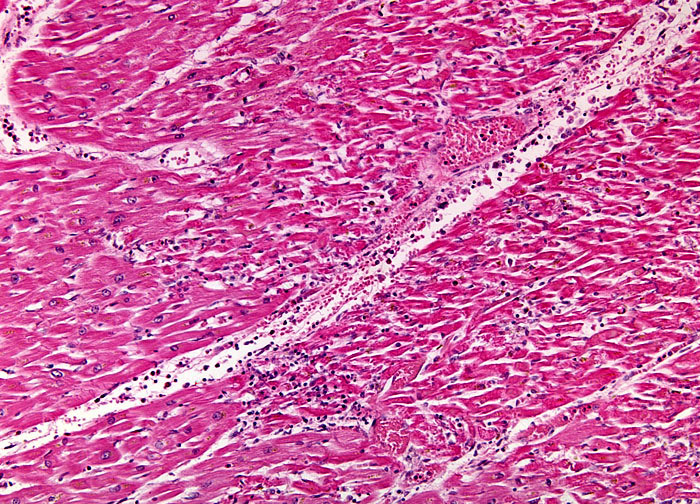
Myocardial Infarction at 10x Magnification
Myocardial infarction is commonly related to the gradual accumulation of cholesterol plaques in the arterial walls known as atherosclerosis. Atherosclerosis is characterized by a narrowing of the lumenal space within arteries and hardening of arterial walls. When atherosclerosis occurs in coronary arteries, there is a risk that a plaque may rupture and a blood clot will form over top of it. If this clot becomes so large that it blocks the blood flow through the artery, acute myocardial infarction occurs. The precise reason that cholesterol plaques rupture and form blood clots is not well understood, but there are a number of factors that can contribute to the event. Some of the best-known contributing factors include high blood pressure, adrenaline levels, and LDL cholesterol, as well as smoking and diabetes mellitus.













